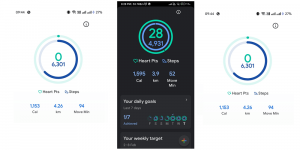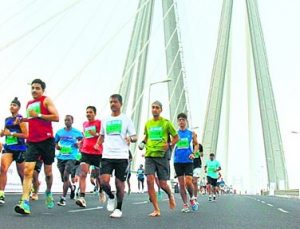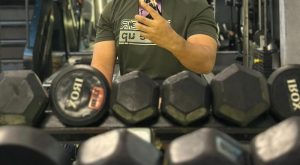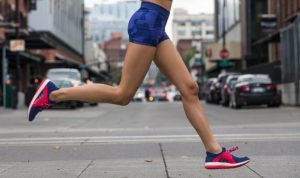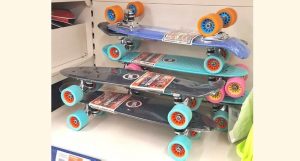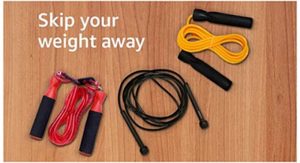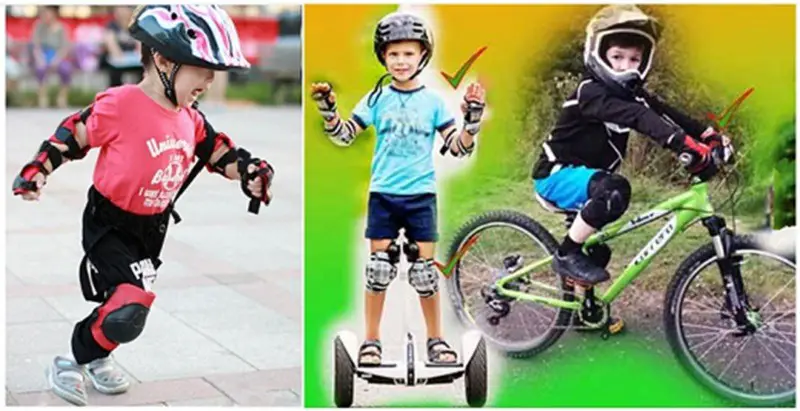
When kids are learning to ride a bike or skate, they should be wearing the right protective gear which will not only save the body parts but will also act as a confidence booster.
Even if your child is going to use the bike or skate only around hour house or in the neighborhood, it is recommended that they wear helmet, knee / elbow pads.
Whether your kid wishes to race a BMX, hit the bike park, or just wants to learn to ride, good-fitting child-specific protective pads provides protection to the child (and peace of mind to the parents).
Helmets for Kids
Kids should always wear helmet whether on a balance bike, bike, scooter, skateboard, in-line and roller skates. It is an extremely important gear when your child is engaged in such outdoor activities as it keeps the child safe in case of falls.

Knee & Elbow Pads for Kids
Knee and elbow are the obvious areas where a child is likely to get injuries, in case of a fall, and when the surface is rough.
Most vendors sell elbow and knee pads as a set.
Use the soft, flexible pads to offer protection when outdoors; these are general-purpose and can be used for various activities.
Pads with hard outer shells, on the other hand, are better suited only for skates. They tend to be bulkier and less flexible and may not be comfortable for other outdoor activities, besides skating.
Biking Gloves for Kids
Biking gloves protect and are also great for added comfort and grip. Here we take a look at the best Biking gloves for Toddlers.
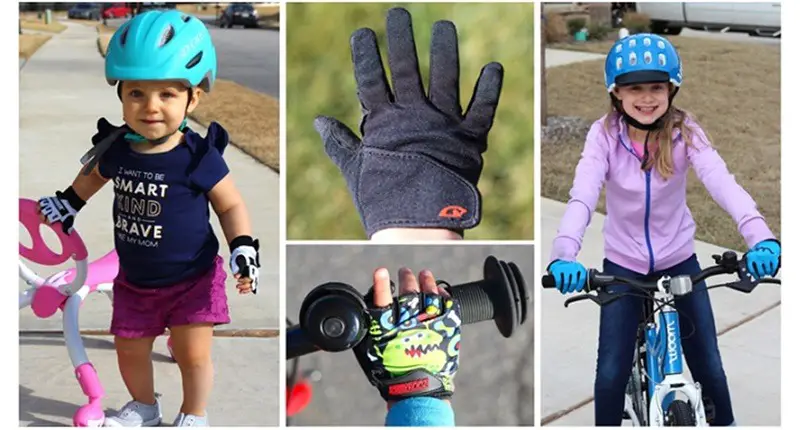
Cycling gloves serve different purposes, depending on the age of the rider and also the riding environment.
Gloves with padded palms are great for balance bike riders because little riders tend to fall hands first.
As a result, gloves are likely to provide better protection for balance bike riders from bumps and scrapes, as compared to knee or elbow pads.
For older riders, gloves can be helpful in several ways:
- Minimize impact from the road and trails
- Improve grip (sweaty hands aren’t good for grip)
- Ease the overall strain on hands from the constant grip on the handlebars
Besides being useful, what I have observed is that kids just love to wear gloves more as an accessory (mostly to show off).
When it comes to gloves, you have the option of choosing half-finger gloves or full-finger gloves.
For little toddler and preschool fingers, half-finger is recommended as they’re lot easier to get on and off, and make the hands less sweaty. Since little ones tend to fall on the palms on their hands, their fingertips generally don’t need any added protection. So I would say, go for the half-finger gloves.
However, during colder months, you may not have an option but to opt for full-fingered gloves, despite the added hassle.
For older riders, choosing between half-finger or full-finger is more of a personal preference.
Lot of older kids prefer full-fingers gloves because, like adults, they prefer the added comfort, padding, and grip the gloves provide for their entire hand.
Also, while riding, older kids grip the handlebar with their full hand (wrapping all the way around), so a full-fingered glove will be more comfortable and provide better grip.
However, during hot weather, riders may prefer half-fingered gloves in order to prevent sweaty hands.
Tips to Ensure Safe Outdoor Play for Children
Outdoor play is very important for kids. However, you also need to ensure safety of children when they are playing outdoors as they are exposed to various hazards when playing outdoors which can cause injury.
So, as parents, you need to be careful and ensure adequate steps are taken to keep your children safe.
Always supervise children. Be extra vigilant when kids are playing in or near the water, on driveways, and near streets with traffic.
Always keep ride-on toys away from unsupervised and high-traffic areas, such as driveways and sidewalks, so they don’t lure a child into a dangerous situation.
Make sure kids are wearing helmets, knee pads and other protective gear when riding bicycles, tricycles, scooters and skateboards.
Watch children carefully whenever they’re near water. Kids should never be left alone near swimming pools, beaches, lakes or other bodies of water—even “kiddie” pools—no matter what their ages or swim capabilities. Children under 5 should always be no more than an arm’s length from an adult near water sources.


